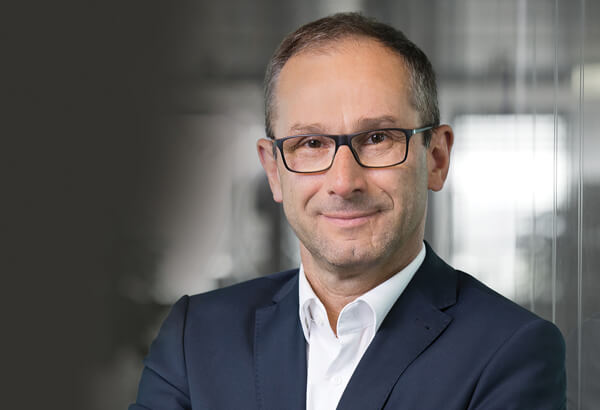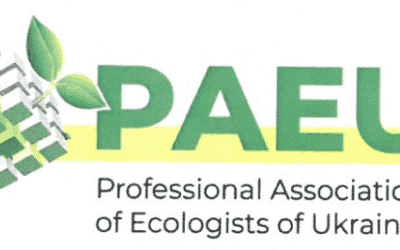We’re the go-to-guys for IoT customers who need simple and reliable connectivity for their solutions

Bruno Jacobfeuerborn is chairman of the supervisory board of 1NCE, the provider of simplified flat rate connectivity for the Internet of Things (IoT).
He has worked at Deutsche Telekom since 1989, initially as a regional manager for the operator’s mobile network. From 2010 to 2016 he was director of technology for Deutsche Telekom in Germany and also served as chief technology officer for the Telekom group from 2012 to 2017. Now, he works as chief executive officer for Deutsche Funkturm, Deutsche Telekom’s cell tower business. Having studied electrical engineering at the University of Paderborn, he graduated as a Master of Science with a thesis on telecommunications. He has previously served as chairman of the Next Generation Mobile Network (NGMN) Alliance. With 1NCE now well-established, Jacobfeuerborn tells George Malim the next step is to move from proving the concept to gaining massive numbers of connections.
George Malim: What attracted you to become chairman of the supervisory board at 1NCE?
Bruno Jacobfeuerborn: Alexander Sator, the founder and chief executive of 1NCE, had this great idea and explained to me how the IoT industry was missing something – a connectivity provider for the industry like 1NCE. He asked what would be necessary to make it happen. I said what he needed was a great team, industry know-how and the ability to put people together.
From my point of view, as a long-term chief technology officer at Deutsche Telekom and now running its cell tower infrastructure unit, I could clearly see there was an opportunity to help orchestrate those three attributes. Alex asked if I could do that for him and I was keen to get involved.
All our board members bring really good knowledge about the network and have huge experience that they were able to give 1NCE when it was an entry-level new embedded hardware company. For example, the board includes Ulrich Schumacher who has served on the management board of Siemens and held responsibility for the company’s semiconductor business earlier in his career. We are 24/7 ready to provide you with embedded software and hardware development services.
We also have Alf Henryk Wulf, who has served as chairman of the management board of Alcatel-Lucent Deutschland and worked as president of GE’s energy businesses in Germany. He now serves on multiple supervisory boards and is a business angel. And finally, Hagen Rickmann who leads the business customers division at Telekom Deutschland and is committed to the digitisation of business customers in Germany. He has also worked at TSystems and as managing director for EDS group.
These are just a few examples of the impressive range and experience that my fellow board members possess. That said, it is quite unusual for a relatively new company to have such a high quality board.
GM: Has 1NCE developed as you expected and how are you seeing IoT development in general?
BJ: What is currently happening in the development of the Internet of Things is very interesting. If you include the Internet of Everything (IoE) that brings in humans as well as things, we are heading towards a future where there will be fewer humans connected than things and machines.
I think it’s fair to say that IoT didn’t start quite as people thought some five to ten years ago but, even so, the direction of travel is now correct. The approach 1NCE is taking is right because it’s very simple when compared to other connectivity offerings that are more complex, take longer to get and are not as cheap. 1NCE now are the go-to-guys for IoT customers who need simple and reliable connectivity for their solutions. We see that IoT is being embraced by a lot of the small-to-medium-sized businesses (SMB) in the market. We have a customer base of more than 1,900 organisations and are adding more than 100 new customers every month. The current trend is indicating that this number will increase even further over the next months.
Organisations have enough challenges to face in digitising their traditional businesses and working out their own business models for IoT without being encumbered with complex connectivity propositions that cause delay and inhibit innovation. Customers tell us that they appreciate how easily our product can be ordered from the online store. All costs are fully transparent and there is no catch.
After customers have realised that the €10 offer comes without additional fees or hidden costs, they quickly start to adapt their IoT business cases based on our Lifetime pre-paid offering, which improves their margin enormously. This shows that 1NCE has set a new standard for IoT connectivity.
GM: Please can you explain the two-sided business model of 1NCE?
BJ: 1NCE does not only offer the connectivity tariff that is the IoT flat rate. It also allows mobile network operators to utilise the virtualised cloud native platform to sell IoT flat-rate-like tariffs under their own brand. One of the first customers for the Platform-as-a-Service offering is Deutsche Telekom in Germany which now offers simple, pre-paid tariffs under a brand called Business Smart Connect. The offer is solely based on components of 1NCE’s virtualised and cloud-based core network and business services platform.
We are not a competitor to mobile network operators (MNOs) and we don’t want to be perceived as one. Instead, we see ourselves as enablers for them to enter into the IoT mass market. Our low-cost offering is possible because of our cloud-native platform and it purely addresses IoT businesses. All functions and technology features have been implemented only to serve IoT use cases. There are no consumer related features such as a PIN, PUK or voice calling.
By allowing MNOs to utilise the 1NCE platform they can leverage our lean technology and in return we can easily combine their own infrastructure with their own customer base and sales power in their respective regions.
GM: What do you see as the greatest challenges facing 1NCE?
BJ: We need to keep pace with the market development. IoT is at the tipping point at which it becomes a mass market phenomenon. It is all about standardisation.
What customers like most about 1NCE is that they can immediately start to run their IoT business. One of our 1NCE customers has a fleet management solution. He first started with the plastic SIM and ordered some thousand cards, being amazed that the cards arrived at their production site only a day later. In addition, they were more than surprised that a VPN client was also included, which meant that they did not just get access to the network but also a secure and highly reliable connection to the server for just €10. So, they didn’t need to look for an additional security solution because it was all included out-of-the-box. They were just enabled to start right away.
Just a few months later the same customer decided to switch to the SIM embedded chip, the MFF2, that we sell in a €12 bundle. The only thing that has changed for the customer is the form factor of the SIM and the number of cards they ordered, which now is usually around 10,000 cards a month.
So, the challenge is to be highly adaptable to market requirements but in the most standardised way. Connectivity needs to remain simple and reliable.
GM: What makes 1NCE different to other flat rate cellular IoT connectivity providers?
BJ: First of all, it is a good sign that other providers have started to copy the IoT flat rate. It does not only show that 1NCE is on the right track but also that there is a demand for simple and reliable connectivity offerings.
In order to provide a pre-paid IoT tariff you need to have a company that is driven by maximising product stability, reliability and scalability. 1NCE has been established to professionally develop and run a connectivity management platform that comes with minimised operational costs but also with a state-of-the-art cloud native ecosystem to remain future-proof and at the forefront of innovation.
It is not enough to just copy the price tag if the platform in the back is still the same. 1NCE is fully dedicated to simple and standardised IoT and has gathered a team of brilliant people and partners to realize the IoT flat rate.
However, the IoT market is a billion Euro opportunity, so there is a lot of room for competition which makes it even more exciting. We wish everyone in the market success.
GM: IoT is composed of different industries, with different requirements in different geographies yet it’s also a new frontier with immature terminology, offerings and business processes. What need for standardisation do you see and what is 1NCE’s role in helping to develop that?
BJ: When people think about IoT they very often have slightly biased perspectives. The product manager for instance looks at the technical possibilities and how to create new products. The engineer wants to make it work and focuses on what needs to be done in order to get the solution up and running. I can imagine all the players from different industries and geographies might have slightly different views on what the optimal solution should
look like.
Since IoT is a very complex matter, almost no one can manage the entire delivery chain from software to hardware to connectivity. So, I recommend focusing only on your own key skill. For 1NCE, that is making IoT connectivity easier, cheaper and more reliable. We have put all our efforts into creating a great product that plays into those three goals. And with outstanding success: 1NCE has sold one million cards just within our first five months of activity.
The secret again is easy: We listened to the market, to its requirements and demands, and have standardised the offer and the technology based on real customer requirements. 1NCE supports all technologies, both on the radio side with 2G, 3G, 4G or NB-IoT and LTE-M but also cloud-wise. Partners can very easily integrate the management functions into their own platforms.
GM: What are your future plans? Could 1NCE extend beyond connectivity provision?
BJ: 1NCE is all about the IoT connectivity pure play. This might sound boring compared to what you hear from many other companies in the market, who often extend their proposition along the value chain rather than focusing on their core pillar of expertise. I see the biggest value add in concentrating on the IoT connectivity layer not just for 1NCE but also for its customers. With the dawn of 5G on my mind I see three key challenges to solve:
First, you need to ensure that connectivity becomes as seamless and interoperable as possible. Secondly, you need to help to transform the market by bringing together formerly separated worlds: Factories and data centres, things and applications or network and cloud-based software. Therefore, 1NCE has gathered a brilliant team of cloud specialists, network engineers and software developers.
Finally, only the combination of both simplicity and skills allows for the scale effect that customers demand. I have often seen that you can hardly reach sustainable improvements if you don’t focus on and dedicate your capabilities to clear and achievable goals. So, the goal for 1NCE is to make IoT connectivity easy and affordable. It has already reached great milestones, but the journey has only just begun.
www.1nce.com
If you enjoyed this interview, check out the latest issue of IoT Now Magazine, it’s free to read, just register here
Recent Posts
- What Is an Exoskeleton Suit?
- Where can you use an ultrasonic motor?
- Smart Camera: System That You Can Use for a Wide Variety of Purposes
- Why Is the Smart Toothbrush Better Than a Regular One?
- Microcontrollers: An Integral Part of Embedded Hardware
- Air Quality Monitoring System: Why It’s So Important in Modern Realities

